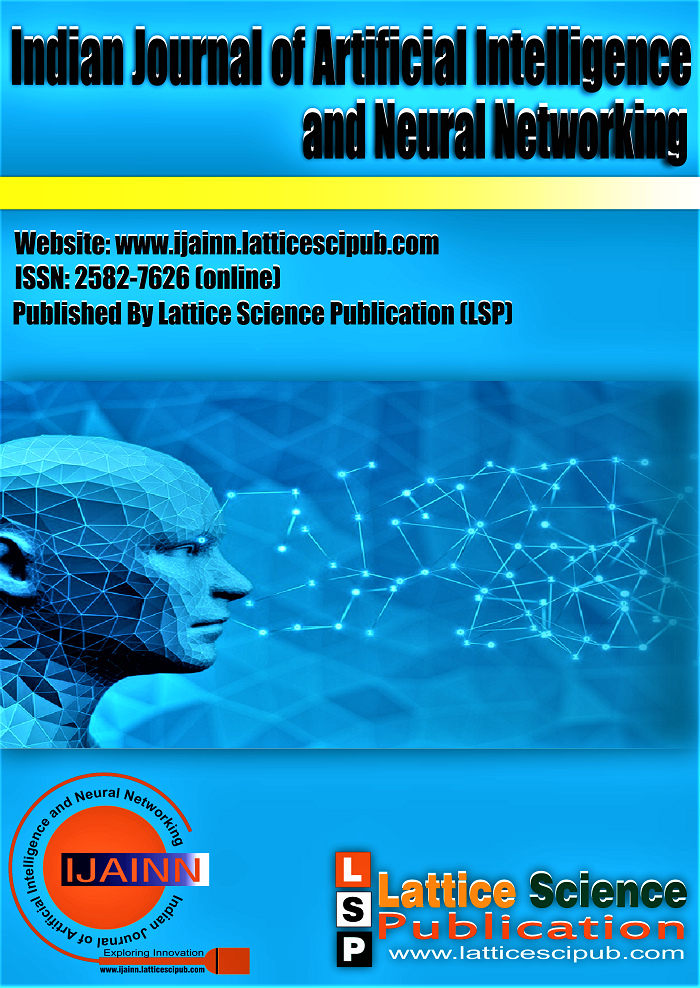Detection of Malware using Phishing Alarm
Main Article Content
Abstract
Informal organizations have become one of the most well known stages for clients to connect with one another. Given the immense measure of touchy information accessible in informal community stages, client security assurance on interpersonal organizations has become one of the most dire examination issues. As a customary data taking procedure, phishing assaults actually work in their method for causing a ton of security infringement occurrences an aggressor sets up trick Web pages (professing to be a significant Website like an interpersonal organization gateway) to bait clients to enter their confidential data. As a matter of fact, the presence of Web pages is among the main variables in beguiling clients, and consequently, the comparability amongWeb pages is a basic measurement for distinguishing phishing Websites. we propose a clever visual likeness based phishing recognition plot utilizing tint data with auto refreshing data set in the paper. Likewise utilize another technique called Phishing-Alarm, That define phishing assaults utilizing highlights that are difficult to dodge by aggressors .Since a PWS (Phishing Website) is made in light of designated real site or other subspecies whose tint data is comparable each other, many PWSs can be thoroughly identified by following comparative hued subspecies. In view of this idea, the proposed conspire recognizes another PWS which has comparable shade data to currently distinguished PWSs. By the virtual experience with genuine dataset, we exhibit that the proposed plot further develops the identification execution as the quantity of recognized PWSs increments.
Downloads
Article Details

This work is licensed under a Creative Commons Attribution-NonCommercial-NoDerivatives 4.0 International License.
How to Cite
References
(2016). PhishMe Q1 2016 Malware Review. [Online]. Available:https://phishme.com/project/phishme-q1-2016-malware-review/ https://doi.org/10.1109/ARES.2012.54
A. Belabed, E. Aimeur, and A. Chikh, ‘‘A personalized whitelist approach for phishing webpage detection,’’ in Proc. 7th Int. Conf. Availability, Rel. Security (ARES), Aug. 2012, pp. 249–254. https://doi.org/10.1145/1456424.1456434
Y. Cao, W. Han, and Y. Le, ‘‘Anti-phishing based on automated individual white-list,’’ in Proc. 4th ACM Workshop Digit. Identity Manage., 2008, pp. 51–60. https://doi.org/10.1145/1754393.1754394
T.-C. Chen, S. Dick, and J. Miller, ‘‘Detecting visually similar Web pages: Application to phishing detection,’’ ACM Trans. Internet Technol., vol. 10, no. 2, pp. 1–38, May 2010.
N. Chou, R. Ledesma, Y. Teraguchi, D. Boneh, and J. C. Mitchell, ‘‘Client-side defense against Web-based identity theft,’’ in Proc. 11th Annu. Netw.Distrib. Syst. Security Symp. (NDSS), 2004, pp. 1–16
C. Inc. (Aug. 2016). Couldmark Toolbar. [Online]. Available:http://www.cloudmark.com/desktop/ie-toolbar
J. Corbetta, L. Invernizzi, C. Kruegel, and G. Vigna, ‘‘Eyes of a human,eyes of a program: Leveraging different views of the Web for analysis and detection,’’ in Proceedings of Research in Attacks, Intrusions and Defenses (RAID). Gothenburg, Sweden: Springer, 2014. https://doi.org/10.1007/978-3-319-11379-1_7
X. Deng, G. Huang, and A. Y. Fu, ‘‘An antiphishing strategy based on visual similarity assessment,’’ Internet Comput., vol. 10, no. 2, pp. 58–65,2006. https://doi.org/10.1109/MIC.2006.23
Z. Dong, K. Kane, and L. J. Camp, ‘‘Phishing in smooth waters: The state of banking certificates in the US,’’ in Proc. Res. Conf. Commun., Inf.Internet Policy (TPRC), 2014, p. 16. https://doi.org/10.2139/ssrn.2407968
Z. Dong, A. Kapadia, J. Blythe, and L. J. Camp, ‘‘Beyond the lock icon:Real-time detection of phishing websites using public key certificates,’’ in Proc. 10th Symp. Electron. Crime Res.(eCrime), May 2015, pp. 1–12. https://doi.org/10.1109/ECRIME.2015.7120795
M. Dunlop, S. Groat, and D. Shelly, ‘‘GoldPhish: Using images for content based phishing analysis,’’ in Proc. 5th Int. Conf. Internet Monitor. Protection (ICIMP), May 2010, pp. 123–128. https://doi.org/10.1109/ICIMP.2010.24.
I. Fette, N. Sadeh, and A. Tomasic, ‘‘Learning to detect phishing emails,’’in Proc. Int. World Wide Web Conf. (WWW), May 2007, pp. 649–656. https://doi.org/10.1145/1242572.1242660
Sharma, B., Singh, Dr. P., Kaur, Dr. J., & Bringas, Dr. P. G. (2019). Antiphishing Model Based on Similarity Index and Neural Networks. In International Journal of Engineering and Advanced Technology (Vol. 9, Issue 1, pp. 4114–4119). Blue Eyes Intelligence Engineering and Sciences Engineering and Sciences Publication - BEIESP. https://doi.org/10.35940/ijeat.a1350.109119
Tumuluru, P., Jonnalagadda, R. M., Konatham, D. S. S., Samineni, V., & Ramani, B. L. (2019). Extreme Learning Model Based Phishing Classifier. In International Journal of Recent Technology and Engineering (IJRTE) (Vol. 8, Issue 4, pp. 9606–9612). Blue Eyes Intelligence Engineering and Sciences Engineering and Sciences Publication - BEIESP. https://doi.org/10.35940/ijrte.d9984.118419
Shukla, A. S., Chavan, S. R., & R, S. (2023). Spear Watch: A Thorough Examination to Identify Spear Phishing Attacks. In International Journal of Innovative Technology and Exploring Engineering (Vol. 12, Issue 8, pp. 46–51). Blue Eyes Intelligence Engineering and Sciences Engineering and Sciences Publication - BEIESP. https://doi.org/10.35940/ijitee.h9680.0712823
Challa, R., & Sambrani, Dr. S. (2023). HR Policies and Strategies in It Companies in India - A Conceptual Study. In International Journal of Management and Humanities (Vol. 9, Issue 8, pp. 24–27). Blue Eyes Intelligence Engineering and Sciences Engineering and Sciences Publication - BEIESP. https://doi.org/10.35940/ijmh.h1599.049823
Assegie, T. A. (2021). K-Nearest Neighbor Based URL Identification Model for Phishing Attack Detection. In Indian Journal of Artificial Intelligence and Neural Networking (Vol. 1, Issue 2, pp. 18–21). Lattice Science Publication (LSP). https://doi.org/10.54105/ijainn.b1019.041221





